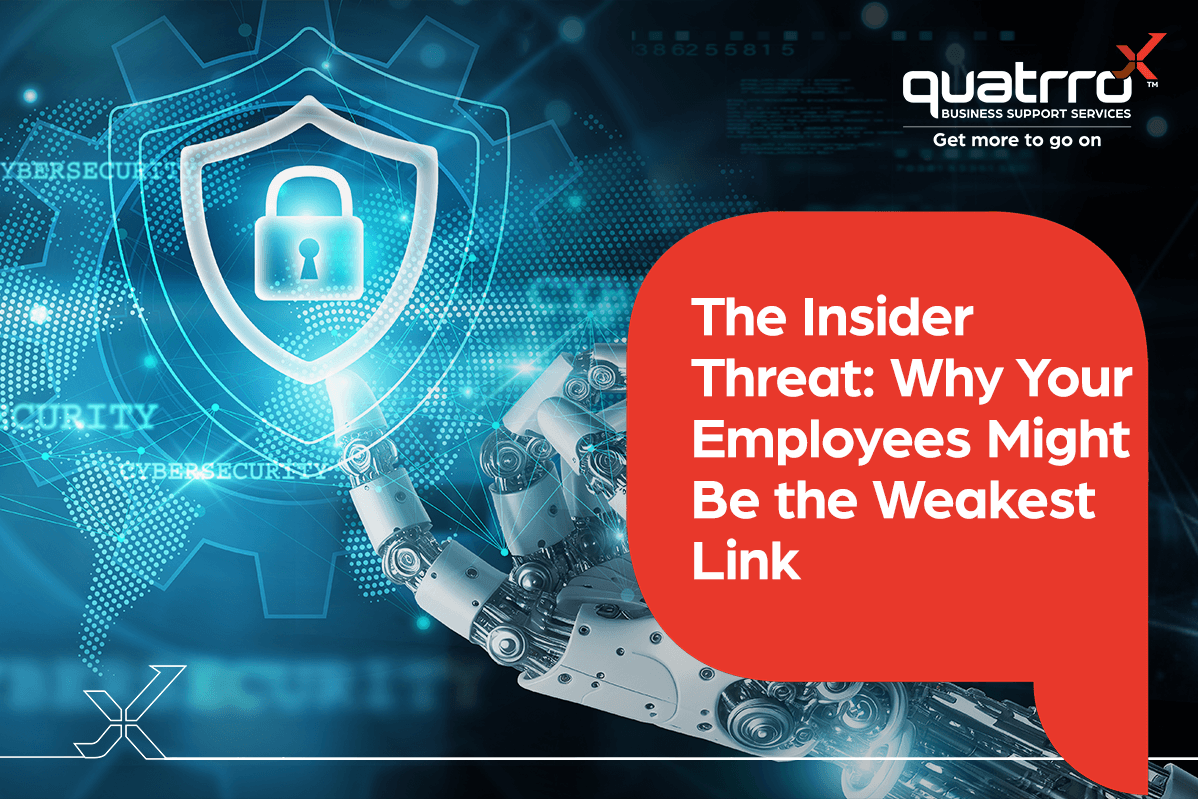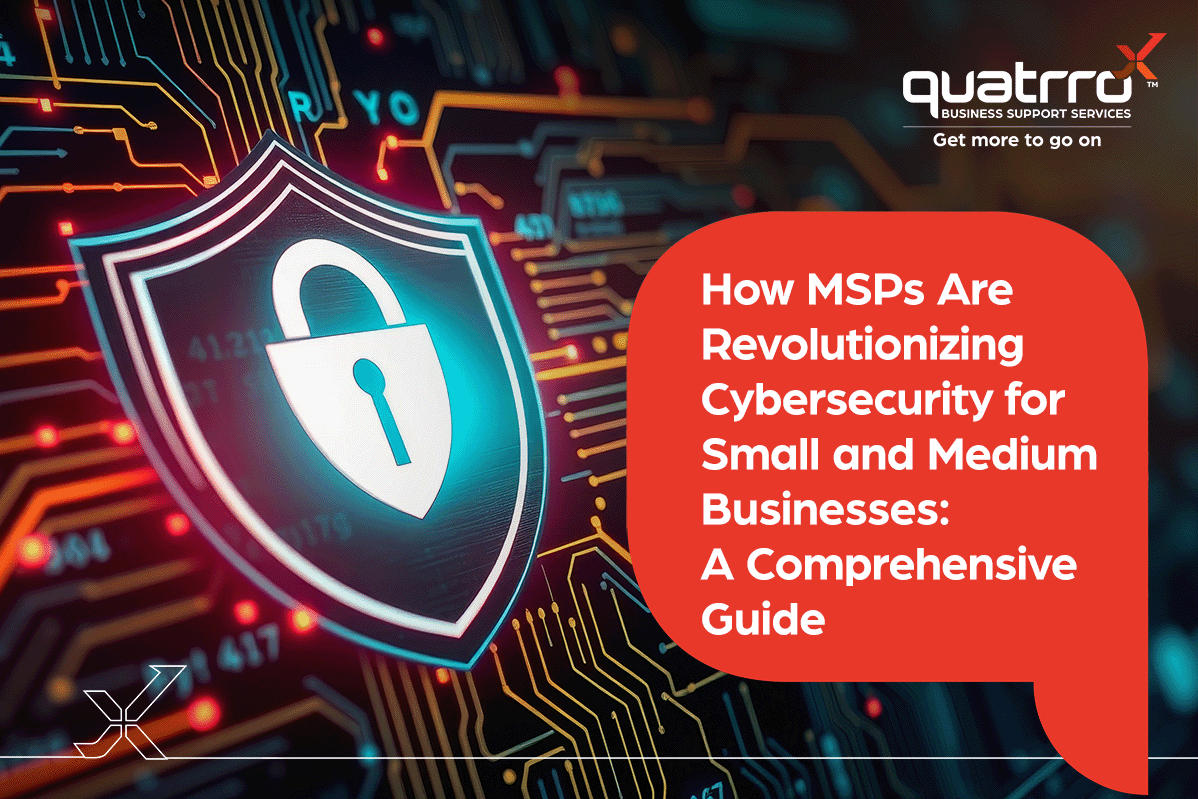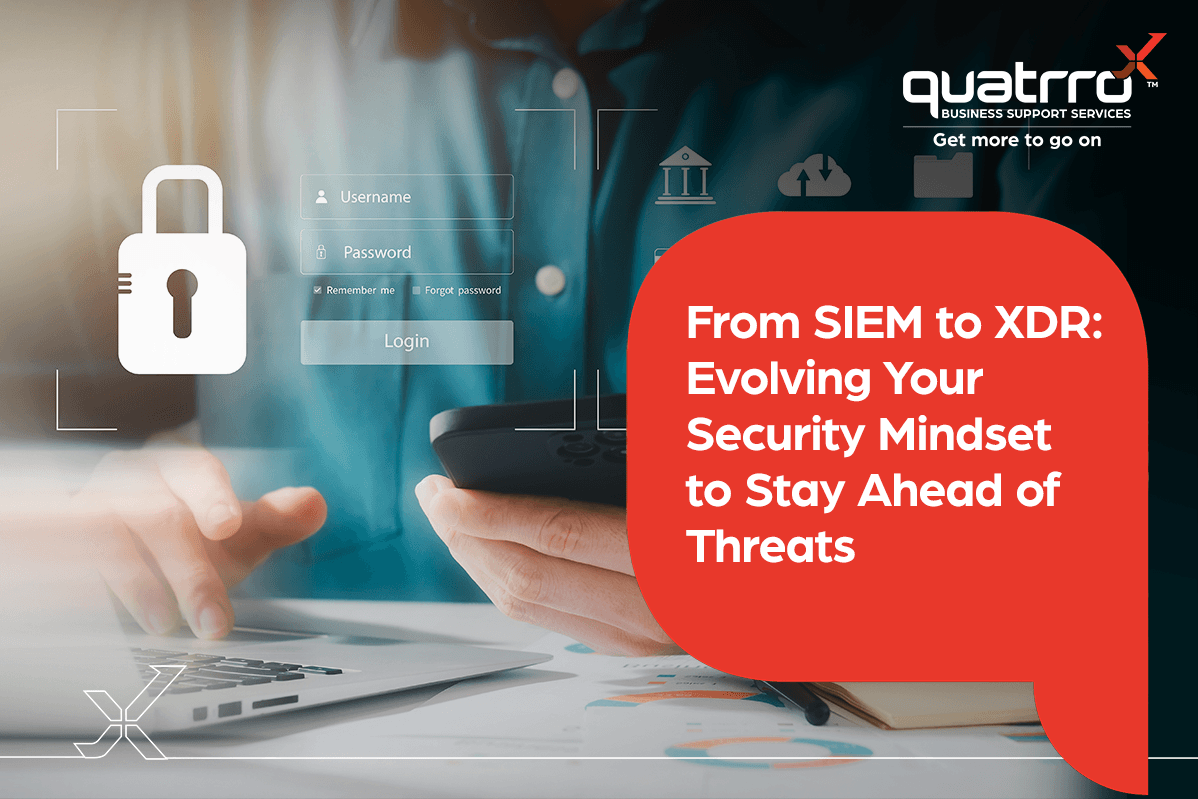Blog Details
Safeguarding Your Business: Preventing Social Engineering Attacks
October 20, 2023

Social engineering is one type of cyberattack that uses human psychology to obtain access to sensitive information or systems. Attackers employ a range of approaches including phishing emails, phone calls, and impersonation, to dupe people into revealing confidential information or taking actions that jeopardize security.
Social engineering attacks are becoming more common, putting businesses of all sizes at risk. Attackers have more possibilities than ever to exploit vulnerabilities in today’s digital ecosystem, especially when so much of our business and personal lives are handled online.
The best cyber defense to protect your organization against social engineering attacks is through proactive prevention. You will reduce the chance of falling victim to a cyberattack by educating your workforce, implementing security rules and procedures, and utilizing strong security technologies.
Understanding Social Engineering Attacks
Social engineering attacks typically follow a three-step process:
 |
ReconnaissanceThe attacker gathers information about the target, such as their job title, email address, and interests. This information can be obtained through social media, online searches, or even physical surveillance. |
 |
Rapport/Building TrustThe attacker builds a rapport with the target by posing as a trusted individual, such as a coworker, customer support representative, or government official. |
 |
Exploitation/ManipulationOnce the attacker has established trust, they exploit the target's vulnerability to trick them into revealing sensitive information or taking actions that compromise security. |
Social engineering attacks are so effective because they exploit human nature. We are all susceptible to making mistakes, especially when we are under pressure or stressed. Attackers take advantage of this by creating scenarios that make us feel rushed, afraid, or obligated to help.
Social engineering attackers use a variety of psychological tactics to manipulate individuals, including:
 |
ScarcityAttackers may create a sense of scarcity by creating a false sense of urgency or by making it seem like the victim is about to miss out on a valuable opportunity. |
 |
AuthorityAttackers may pose as an authority figure to gain the target's trust. |
 |
Social proofAttackers may make it seem like everyone else is doing something, such as clicking on a link or opening an attachment, to get the target to do the same. |
 |
ReciprocityAttackers may do something nice for the target, such as providing them with helpful information, to create a sense of obligation. |
Successful social engineering attacks can be disastrous for both organizations and individuals. For businesses, social engineering attacks can lead to data breaches, financial losses, and reputational damage. For individuals, social engineering attacks can lead to identity theft, financial fraud, and emotional distress.
Recognizing Common Social Engineering Techniques
Social engineers use a variety of tactics and techniques to manipulate individuals into revealing confidential information or taking actions that compromise security. Here are some of the most common:
Phishing emails: Phishing emails are designed to look like they are from a legitimate company, such as your bank or employer. The email might contain a link to a fake website that looks just like the real website, but is designed to steal your login credentials.
Spear phishing: Spear phishing is a type of phishing attack that is targeted at specific individuals. The attacker gathers information about the target, such as their name, job title, and interests, and then uses this information to create a personalized phishing email.
Vishing: Vishing is a type of social engineering attack that involves using voice communication, such as phone calls or voicemail, to deceive people. The attacker might pose as a customer support representative, a government official, or a member of your IT department to gain trust.
Smishing: Smishing is a type of social engineering attack that involves using text messages to deceive people. The text message might contain a link to a malicious website or it might ask the recipient to call a number that is controlled by the attacker.
Websites: Social engineers can also use websites to deceive people. For example, they might create a fake website that looks like a legitimate website, such as a bank's website. When the victim enters their personal information, such as their username and password, the attacker steals it.
Pretexting with false identities: Pretexting is a type of social engineering attack in which the attacker poses as someone they are not to gain trust. For example, an attacker might call you pretending to be a customer support representative and ask you for your social security number or credit card number.
Quid pro quo: Quid pro quo is a type of social engineering attack in which the attacker offers something in exchange for something else. For example, an attacker might offer you a discount on a product if you provide them with your email address.
Baiting with enticing offers or downloads: Baiting attacks involve leaving a tempting target, such as a USB drive, in a public place. The target is typically infected with malware, which will install itself on the victim's computer when they plug it in.
Impersonation: Impersonation is a type of social engineering attack in which the attacker poses as someone they are not to gain access to a secure area. For example, an attacker might dress up as a security guard to gain access to a building.
Tailgating: Tailgating is a type of social engineering attack in which the attacker follows someone into a secure area without permission. For example, an attacker might follow someone through a door that requires a key card to open.
Shoulder surfing: Shoulder surfing is a type of social engineering attack in which the attacker looks over the victim's shoulder to steal their personal information, such as their PIN number or credit card number. For example, an attacker might look over someone's shoulder while they are using an ATM machine.
Real-world examples to illustrate the above-mentioned social engineering techniques:
Phishing
A phishing email is sent to employees of a company that appears to be from the company's CEO. The email claims that the CEO is out of the office and needs the employees to transfer a large sum of money to a foreign bank account. The email contains a link to a fake website that looks like the company's intranet site. The employees who click on the link and enter their login credentials have now had their credentials stolen.
Pretexting with false identities
Business email compromise (BEC) is an example of pretexting with false identities and is a particularly fiendish type of targeted social engineering that relies heavily on pretexting. In BEC, the character is a real-life company executive or high-level business associate with authority or influence over the target. The situation is the character’s need for help with an urgent task—e.g., I’m stuck in an airport and forgot my password—can you send my password to the payment system (or can you wire $XXX, XXX.XX to bank account #YYYYYY to pay the attached invoice)’?
Quid pro quo:
An attacker calls you and offers you a gift if you take a survey. The survey asks for your personal information, such as your name, address, and phone number.
Baiting with enticing offers or downloads
An attacker leaves a USB drive in a public library. The USB drive is labeled with a name that suggests that it contains important or confidential information. A library patron finds the USB drive and plugs it into their computer. The malware on the USB drive infects the computer and the attacker can steal the victim's personal information.
Impersonation and tailgating
An attacker dresses up as a security guard and tries to enter a company's office building. The attacker can enter the building because the receptionist does not recognize them and does not ask for identification assuming they are a credentialed employee since they are wearing the guard uniform. Once inside the building, the attacker can access and steal confidential information.
You can better protect yourself and your organization from becoming a victim if you are aware of popular social engineering strategies and tactics. Educating team members about what to watch out for can help make them all part of your proactive cyber defense system.
The Human Element: Educating Your Workforce
The human element is the weakest link in any security system. Social engineers exploit this fact by manipulating people into revealing confidential information or taking actions that compromise security.
Educating employees about social engineering attacks and how to recognize them can significantly reduce the risk of a successful attack. Employees should be aware of the different types of social engineering attacks, the common tactics and techniques used by attackers, and how to respond to suspicious communications.
Here are some tips to share for recognizing and responding to potential social engineering attempts:
Be suspicious of unsolicited emails, phone calls, and text messages. If you do not know the sender or caller, do not click on any links, or provide any personal information.
Verify the identity of anyone who asks for sensitive information. If you receive an email or phone call from someone claiming to be from a legitimate company, contact the company directly to verify the communication.
Be careful about what information you share on social media. Social engineers can use social media to gather information about their targets. Be careful about what information you share, such as your job title, work address, and personal contact information.
Use strong passwords and enable two-factor authentication. Strong passwords and two-factor authentication can help to protect your accounts from being compromised.
Report suspicious activity to your IT department. If you suspect that you have been the victim of a social engineering attack, report it to your IT department immediately.

Secure Communication and Data Handling
Secure communication and data handling are essential for protecting your organization from social engineering attacks and other cyber threats. By implementing and maintaining secure communication protocols, you can help to ensure that your sensitive information is kept safe.
Importance of secure communication practices:
Secure communication practices involve using encryption and other security measures to protect your data when it is being transmitted or stored. This is especially important for sensitive data, such as customer information, financial data, and trade secrets.
Encryption of sensitive data:
Encryption is a process that scrambles data so that it cannot be read by unauthorized individuals. Encryption is one of the most effective ways to protect your sensitive data.
Secure file sharing and storage:
Secure file sharing and storage is the practice of transferring files between two or more parties in a secured, protected, and confidential manner. This includes using cloud storage providers that offer encryption and other security features.
Verified identity confirmation:
Verified identity confirmation involves using methods to verify the identity of individuals before granting them access to sensitive.
Working with an IT outsourcing company is a great way to ensure you have the strongest cyber defense solutions in place with the highest skilled resources possible. Here are some of the ways that IT outsourcing companies can assist with secure communication and data handling:
Implement and maintain security policies and procedures: IT outsourcing companies can help organizations to develop and implement best practice security policies and procedures that outline how employees should handle sensitive information and respond to suspicious communications.
Implement and maintain technical security measures: IT outsourcing companies can help organizations to implement and maintain more advanced technical security measures, such as firewalls, intrusion detection systems, and encryption, to help protect their networks and systems from attack.
Monitor networks and systems for suspicious activity: IT outsourcing companies can help organizations to proactively monitor their networks and systems for suspicious activity that could indicate a social engineering attack or other cyber threat.
Respond to security incidents: IT outsourcing companies can help organizations quickly respond to security incidents, such as social engineering attacks, in a timely and effective manner.
Multi-Factor Authentication (MFA)
Multi-factor authentication (MFA) is a security measure that requires users to provide two or more factors of authentication to verify their identity. This helps to protect accounts from unauthorized access, even if an attacker has obtained one factor of authentication, such as a password.
MFA can be implemented in a variety of ways, such as:
Two-factor authentication (2FA): 2FA requires users to provide a password and another factor, such as a one-time code from a mobile app or a fingerprint scan.
Multi-factor authentication (MFA): MFA requires users to provide two or more factors, such as a password, a one-time code, and a biometric scan.
Effectiveness of MFA in thwarting social engineering attacks
MFA is very effective in thwarting social engineering attacks. Even if an attacker can steal a user's password, they will be unable to access their account unless they also have access to the other MFA elements.
For example, if a user has 2FA enabled on their email account and an attacker steals their password, the attacker will not be able to log into the account without also having access to the user's phone to receive the one-time code from the mobile app.
How outsourcing partners can help implement MFA seamlessly
Outsourcing partners have the expertise and experience to help organizations choose the right MFA solution for their specific needs and to implement and manage that solution effectively.
Here are some of the ways that outsourcing partners can help organizations to implement MFA:
Conduct assessments to identify MFA requirements.
Design and implement appropriate MFA solutions.
Deploy and manage MFA solutions.
Educate users on how to use MFA solutions.
Provide support for users who have trouble using MFA solutions.
When setting up MFA across various platforms and systems, it is important to consider the following best practices:
Choose a solution that is compatible with all the platforms and systems that you need to protect.
Make sure that the solution is easy to use for both users and administrators.
Implement MFA for all users, including, and especially, privileged users.
Educate users on how to use MFA and the importance of MFA.
Provide support for users who have trouble using MFA.
Regular Security Audits and Assessments
Regular security audits and assessments can help organizations to identify vulnerabilities that could be exploited by social engineers. These audits and assessments should include a review of the organization's security policies and procedures, as well as its technical security measures.
Role of regular security audits
Security audits and assessments involve identifying and evaluating security vulnerabilities in an organization's systems and networks. This can be done using a variety of methods, such as manual reviews, automated tools, and penetration testing.
Security audits can be used to identify a wide range of vulnerabilities, including:
Software vulnerabilities: Vulnerabilities in software, such as operating systems, applications, and databases.
Configuration vulnerabilities: Vulnerabilities caused by misconfigured systems and networks.
Administrative vulnerabilities: Vulnerabilities caused by poor security practices, such as weak passwords and lack of access controls.
By identifying the vulnerabilities in their system, organizations can take steps to mitigate them and reduce their risk of being attacked.
Importance of assessing an organization's risk profile
It is critical to evaluate the organization's risk profile to understand which areas are most vulnerable to social engineering attacks. This evaluation should consider elements including the organization's industry, the type of data it gathers and retains, and its target audience. Once the organization's risk profile has been determined, security audits and assessments can be focused on the areas that are most vulnerable.
Strengthening Vendor and Third-Party Security
Vendor and third-party risk management is a crucial component of every organization’s security strategy. External collaborators, such as vendors and suppliers, can have access to sensitive data and systems, so it is important to ensure that their security practices are adequate.
There are several strategies that organizations can use to evaluate and enhance the security practices of external collaborators:
Conducting security assessments
Compliance with security standards
Monitoring security performance
How outsourcing can ensure that third parties meet security standards.
Outsourcing companies have the expertise and experience to help organizations evaluate and enhance the security practices of their third-party suppliers.
Outsourcing companies can also help organizations to monitor the security performance of their third-party suppliers and to provide security training to their third-party suppliers.
Incident Response and Recovery Planning
A robust incident response plan and recovery plan are essential for any organization that wants to be prepared to respond to a social engineering attack.
Importance of a robust incident response plan & recovery plan
An incident response plan outlines the steps that will be taken to identify, contain, eradicate, and recover from a social engineering, or other, cyberattack. A recovery plan outlines the steps that will be taken to restore systems and data to their original state after a social engineering, or other, cyber-attack.
Having a robust incident response plan and recovery plan in place can help organizations to:
Reduce the impact of a social engineering attack
Mitigate the risks associated with a social engineering attack
Recover from a social engineering attack quickly and efficiently
How outsourcing can provide 24/7 monitoring and rapid incident response
Outsourcing companies can provide 24/7 monitoring of your systems and networks for suspicious activity. They can also provide rapid incident response services if an attack does occur. Outsourcing companies have the expertise, experience, and resources to quickly identify and contain security incidents. They also have the resources to quickly eradicate threats and restore systems.
Here are some steps for creating an effective incident response strategy:
Identify the organization's assets: The first step is to identify the organization's most critical assets, such as its customer data, financial data, and intellectual property.
Assess the organization's risks: Once the organization's assets have been identified, the next step is to assess the risks that those assets face. This includes identifying the different types of security incidents that could occur and the likelihood of those incidents occurring.
Develop incident response procedures: Based on the organization's risk assessment, incident response procedures should be developed. These procedures should outline the steps that will be taken in the event of a security incident.
Test the incident response procedures: The incident response procedures should be tested regularly to ensure that they are effective and that all personnel are familiar with their roles and responsibilities.
Maintain the incident response procedures: The incident response procedures should be reviewed and updated regularly to ensure that they remain current and effective.
Staying Informed and Adaptive
The landscape of social engineering attacks is constantly evolving. Attackers are developing new techniques and exploiting new vulnerabilities to trick people into revealing confidential information or taking actions that compromise security.
It is important for organizations to stay informed about the latest social engineering threats and best practices. This can be done by monitoring security news and advisories, attending security conferences or webinars, and reading security blogs and articles.
Benefits of outsourcing for maintaining up-to-date security measures
Outsourcing can help organizations to maintain up-to-date security measures. Outsourcing companies have the expertise and experience to stay informed about the latest social engineering threats and to develop and implement effective security measures.
Outsourcing companies can also help organizations to train their employees on social engineering awareness and prevention.
Conclusion
Social engineering attacks are a serious threat to businesses of all sizes. By understanding the tactics and techniques used by attackers, and by implementing proactive prevention strategies, businesses can significantly reduce their risk of becoming a victim.
Key takeaways for preventing social engineering attacks:
Educate employees about social engineering: Employees should be aware of the different types of social engineering attacks and how to spot them. They should also know who to report suspicious activity to.
Implement security policies and procedures: Businesses should have policies and procedures in place for handling sensitive information, such as customer data and financial records. These policies should include procedures for verifying the identity of people who request access to sensitive information.
Use technical security measures: Businesses should implement strong technical security measures, such as firewalls and intrusion detection systems, to help protect their networks and systems from attack.
Stay informed and adaptive: Organizations need to stay informed about the latest social engineering threats and best practices to stay ahead of the attackers.

IT outsourcing can help businesses to build a resilient defense against social engineering attacks in several ways:
Expertise and experience: IT outsourcing companies have the expertise and experience to identify and mitigate social engineering risks.
Access to the latest technologies and solutions: IT outsourcing companies have access to the latest security technologies and solutions to protect businesses from social engineering attacks.
24/7 monitoring and response: IT outsourcing companies can provide 24/7 monitoring and response to social engineering attacks, helping businesses to quickly contain and mitigate the damage.
The best way to defend against social engineering attacks is to be proactive. By implementing the prevention strategies outlined above, businesses can significantly reduce their risk of becoming a victim.
Social engineering attacks are a serious threat to businesses of all sizes. By proactively implementing prevention strategies, you can significantly reduce your risk of falling victim to these attacks.
Here are some things you can do to get started:
Explore outsourcing options for security and training. Outsourcing companies can provide you with the expertise and resources you need to build a resilient defense against social engineering attacks.
Review your security policies and procedures. Make sure that your policies are up-to-date and that your employees are aware of them.
Provide security training to all employees. Training should cover the different types of social engineering attacks and how to identify and avoid them.
Implement a layered security approach. This includes using multiple security controls, such as firewalls, intrusion detection systems, and encryption.
Monitor your networks and systems for suspicious activity. This will help you to identify and respond to attacks early.
Have a plan in place for responding to security incidents. This will help you to minimize the impact of an attack if it does occur.

If you need assistance with any of these steps, please contact us or visit our website for more information. We can help you to assess your security risks, develop a security plan, and implement the necessary security controls.
By working together, we can help to protect businesses from the devastating consequences of social engineering attacks.








